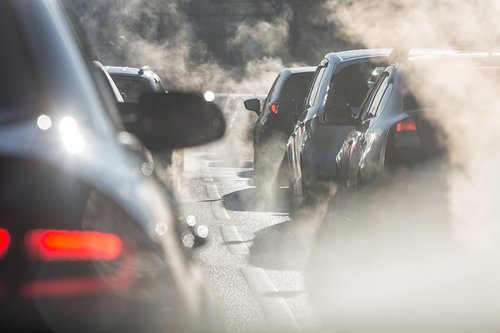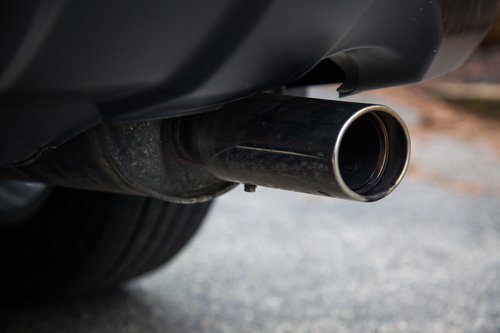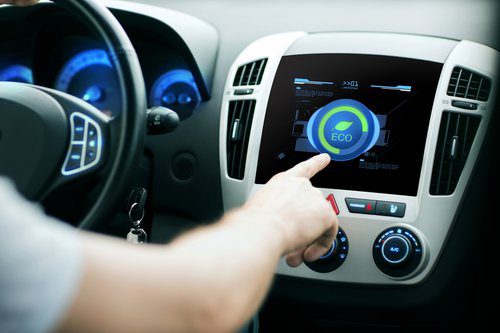
CO2 emissions from cars: standards, taxes, simulator
Content
From 1 January 2020, new cars must meet the European CO2 emission standard. It is also mandatory to display the CO2 emissions of the new vehicle. There is an environmental penalty that includes penalties for excessive CO2 emissions. How to find them, how to reduce them… We tell you all about the CO2 emissions from a car!
🔍 How is a car's CO2 emissions calculated?

The environmental bonus malus has been reformed in 2020. This reform is part of the European drive to reduce CO2 emissions from cars. Therefore, it was decided that from 1 January 2020, CO2 emissions of new cars can no longer exceed 95g / km average.
Each gram of excess imposes on the manufacturer 95 € fine for a car sold in Europe.
At the same time, the French environmental penalty threshold was lowered and the calculation methodology changed. From January 1, 2020, a fine has been applied. from 110 g CO2 emissions per kilometer... But this was only true for the NEDC cycle (for The new European cycling cycle), has been in effect since 1992.
From March 1, 2020, the standard is WLTP (Globally harmonized test procedure for passenger cars), which changes the test conditions. For WLTP, tax starts at 138g / km... Thus, in 2020, there were two ecological penalty nets. New changes will take place in 2021 and 2022, which will further lower the thresholds.
The French car fine is a tax on the most polluting cars. Therefore, when you buy a vehicle whose emissions exceed a certain threshold, you will have to pay an additional tax. Here is a table of part of the penalty scale for year 2:
Thus, the penalty provides for the authorization of any CO2 emissions in excess of 131g / km, with a new threshold for each gram and a penalty of up to up to 40 euros... In 2022, a tax on the weight of cars weighing more than 1400 kg is also due to come into force.
For used cars, the environmental penalty is applied a little differently, as it depends on financial capacity. car in horsepower (CV):
- Power less than or equal to 9 CV: no penalty in 2020;
- Power from 10 to 11 CV: 100 €;
- Power from 12 to 14 HP: 300 €;
- Power over 14 CV: 1000 €.
This allows you to find out about the penalties for CO2 emissions only with the car registration card! This information is in any case also indicated in field V.7 of your registration document.
For new cars, the calculation of the CO2 emissions in the car is done by the engineers according to this well-known WLTP cycle. They will take care of testing the car at different engine speeds and different torques.
Please note that technical inspections every two years ensure compliance with pollution control standards. The vehicle's CO2 emission limit is checked during a technical inspection by an authorized center where you are driving it.
🚗 How to find out the CO2 emissions from a used car?

Manufacturers are now required to display the CO2 emissions of the new car. In this case, they are easy to recognize. It also lets you know if you have to pay a tax related to the car's CO2 emissions.
Emissions from a used or old car can be estimated in two ways:
- On the basis of fuel consumption from the car;
- Using ADEME Simulator (French Agency for the Environment and Energy).
If you are good at math, you can use your car's gas or diesel consumption to estimate your CO2 emissions. Thus, 1 liter of diesel fuel emits 2640 g of CO2. Then you just need to multiply by the consumption of your car.
A diesel car that consumes 5 liters per 100 km gives off 5 × 2640/100 = 132 g CO2 / km.
For a gasoline car, the numbers are slightly different. Indeed, 1 liter of gasoline emits 2392 g of CO2, which is less than diesel. Thus, the CO2 emissions of a petrol car consuming 5 liters / 100 km are 5 × 2392/100 = 120 g CO2 / km.
You can also find out your car's CO2 emissions using the ADEME simulator available on the public service website. The simulator will ask you to specify:
- La brand Your car;
- Son model ;
- Sa consumption or its energy class, if you know it;
- Le type of energy used (gasoline, diesel, as well as electric, hybrid, etc.);
- La bodywork vehicle (sedan, station wagon, etc.);
- La Transmission (automatic, manual, etc.);
- La размер a car.
💨 How can I reduce my car's CO2 emissions?

The limitation of CO2 emissions from cars and the new standards that change every year are obviously aimed at reducing the pollution from our cars. This is also the reason why pollution control equipment is installed on your vehicle:
- La EGR valve ;
- Le particulate filter ;
- Le oxidation catalyst ;
- Le SCR system.
You can also apply some green driving principles to reduce CO2 emissions on a daily basis:
- Don't drive too fast : when driving fast, you consume more fuel and therefore emit more CO2;
- Take it easy on acceleration and quickly change gears;
- Limit the use of accessories like heating, air conditioning and GPS;
- Use speed regulator to reduce acceleration and deceleration;
- To avoid curb in vain and use the engine brake;
- Do it your tire pressure : insufficiently inflated tires consume more fuel;
- Take proper care of your car and review it every year.
Keep in mind, too, that if an electric vehicle emits on average half the CO2 emissions of a thermal car, its life cycle is highly polluting. In particular, the production of an electric vehicle battery is very harmful to the environment.
Finally, it is not necessary to think that getting into a new car at the expense of the old one is an environmental gesture. Yes, the new car will consume less and pollute the environment less. However, when assembling a new car, a lot of CO2 is released.
Indeed, ADEME study concluded that demolition of an old car and construction of a new car are rejected 12 tons CO2... Therefore, to compensate for these emissions, you will have to travel at least 300 kilometers in your new car. Therefore, you will need to keep it in good condition in order for it to last long.
Now you know all about car CO2 emissions! As you can see, there is naturally a tendency to reduce them with increasingly stringent standards. To avoid emitting too much CO2 and therefore excessive pollution, it is especially important to maintain your vehicle correctly. Otherwise, you run the risk of paying the costs of technical control!